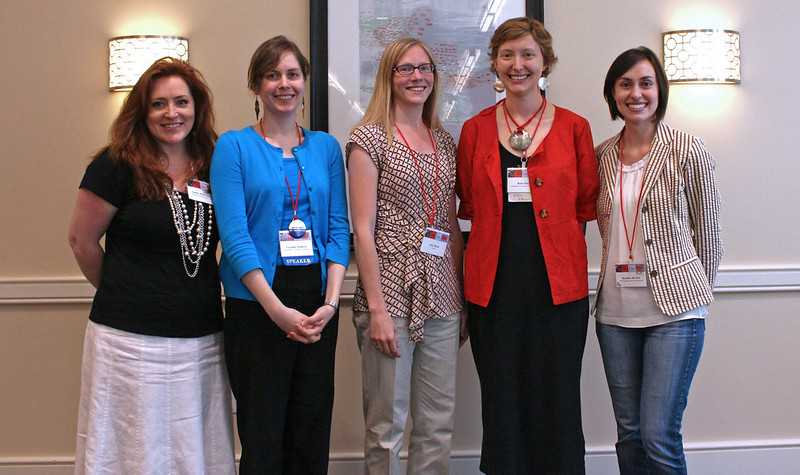Ms. Chui presented a truly gorgeous Renaissance painting that came from the Budapest Museum of Fine Arts to the J. Paul Getty Museum for a collaborative research and conservation project. Immediately it was clear that the style was recognizable as influenced by Leonardo da Vinci. This was probably the reason for the misattribution in the 18th century and earlier. With an array of beautiful photography comparing various paintings art historically, the very convincing case was made for the current attribution to Giovanni Antonio Boltraffio, a student of Leonardo in his workshop in Milan at the turn of the 16th century.


Extensively but not expertly previously restored, Ms. Chui unraveled the condition of the panel painting layer by layer with excellent documentation from the international team that worked on this project. Each layer of discovery added further proof to Boltraffio’s authorship.
In fact, it seemed to me that the research and documentation discovery process on this painting must add to the collective knowledge on Leonardo’s techniques and teachings. Adding to that body of knowledge is always an exciting prospect. It was wonderful to see the evidence that Ms. Chui presented of the master’s hand in the manufacturing process and the design work. Specifically, I found the discussion on original fingerprints left behind in the imprimatura layers interesting, though no conclusion was insinuated that they were definitely by Leonardo.
While none of the conservation treatments were innovative, they were most interesting, well photographed and pleasantly presented. As you might expect, the quality of the conservation work resulted in maximizing the original beauty of a truly unique and beautiful image of this holy mother and child. It made for excellent technical entertainment much the way I found myself eagerly awaiting, back in the day, the arrival of the latest National Gallery Bulletin. Detailed, colorful cross sections, exceptional and easy to understand diagrams to clarify, photographic references and ties to other works of art and the fluid manner of Ms. Chui made this a 1st class presentation.


If you missed this presentation, then I’m sorry but it is impossible to do the material presented justice in this blog post. We can only hope that Ms. Chui publishes her material accompanied by all of the slides of her powerpoint (doubtful). Visually, it’s a great presentation but, in addition, the info needs to be searchable and referenced by others.
Contact Ms. Sue Ann Chui at schui@getty.edu and (310) 440 7023
Express yourself and reach out: “Like” this article by clicking on the thumbs up below, refer this posting to others you connect with via Facebook, Twitter etc.
Scott M. Haskins
Fine Art Conservation Laboratories (FACL, Inc.)
www.fineartconservationlab.com
(805) 564 3438










